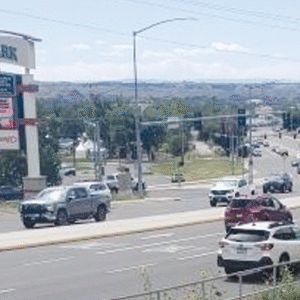Once again the Montana Environmental Information Center (MEIC) is suing the Department of Environmental Quality (DEQ) regarding their permitting of the NorthWestern Energy’s Yellowstone County Generation Station, located near Laurel. The case was filed by MEIC and the Western Environmental Law Center in Yellowstone County District Court on September 29.
Previous suits against the DEQ resulted in a re-do by the DEQ of their research in issuing a permit to the Generation Station, which still resulted in DEQ approving the permit. That was followed by another suit by MEIC again challenging the permit and demanding another re-do, claiming that they “…failed to consider greenhouse gas emissions and the lighting impacts of the facility” in its review. In that case, last January, the Supreme Court reversed a District Court’s decision to vacate the air quality permit, which was a win for NorthWestern Energy, which opened the Generation Station a year ago.
The new MEIC case might be viewed as a challenge to a new Montana state law – House Bill 971 — which bars the state from considering climate impacts in its analysis of large projects such as coal mines and power plants.
The new MEIC case claims that DEQ failed to properly consider and disclose the climate impacts and greenhouse gas emissions associated with Yellowstone County Generating Station
The State Legislature passed House Bill 971 in response to the Supreme Court decision in Held v. Montana, in which the justices favored 16 youths who argued that Montana’s approach to regulating fossil fuel plants jeopardized their rights to a “clean and healthful environment”, which they claimed is guaranteed in the Montana Constitution.
Judge Michael Moses wanted to set aside the Montana Department of Environmental Quality (DEQ) permit for the Generation Station, saying that DEQ failed to adequately assess the power plant’s impact on “global warming” – an almost impossible and prohibitively costly undertaking. Because of that reality, the Montana State Legislature responded with HB 971 which declared that entities such as power plants do not have to meet such a high bar, in order to become permitted. The Legislature called the Judge’s requirement impossible and potentially far-reaching for future Montana projects.
MEIC and other environmental groups have kept NorthWestern Energy tied up for a decade in legal challenges and court cases, over the Yellowstone County Generation Station, which the utility proposed to build in order to generate enough power to serve the state during periods of high consumption when demand exceeds supply.
Most recently, MEIC has focused on complaints of excessive lighting and sound, having failed in blocking the plant’s construction on issues regarding zoning.
First they sued over whether the City of Laurel or Yellowstone County had authority over zoning. The Court declared that the County had authority since it is outside Laurel city limits. Then the environmental groups challenged the appropriateness of the facility, as an industrial development, located as it is next to the CHS Refinery and the City’s Public Works Department Wastewater Treatment Plant.
MEIC claimed that the Generation Station is in violation of county zoning laws, being located in an area, part of which was zoned industrial and another zoned agriculture.
NorthWestern Energy points to extreme measurers they have taken to minimize noise and lighting impacts. Decibels emitted from the plant are less than those of a restaurant, commented one company officials in guiding media through the plant. The lighting is minimal coming from street lights that are in use only to the degree necessary for safety and are directed downward.
NorthWestern Energy officials point to the necessity of the Yellowstone County Generation Station to augment power supply when “the wind doesn’t blow and the sun doesn’t shine,” which means the alternative energy upon which they otherwise depend is not available – which happens quite often during the worst winter months. The company has on several occasions been forced to purchase power on the open market …which is very unreliable because it often happens when additional energy is also being sought by other utilities in the region.
Over the past few years NorthWestern Energy has had to spend about $5 million each year purchasing energy from the market to meet peak use demands.
The $310 million generating station is comprised of 18 reciprocating internal combustion engines that are capable of generating a total of 175 megawatts, which helps close the gap of the generation needs for NorthWestern’s customers in Montana.
NorthWestern Energy President and CEO Brian Bird has stated that the production of the Yellowstone County Generating Plant will cut in half the additional power that NorthWestern needs, but they won’t have all they need until the utility acquires ownership of Colstrip Units 3 & 4 at the beginning of next year.
Josh Follman, the generating station’s project manager, declared during an interview that the plant is “very good, very clean.” It is “One of the cleanest facilities because of its emissions profile.” According to Follman, the company does not have to monitor for emissions because their emissions are “far below the levels set to initiate controls. The plant is equipped with emission monitors that continuously take readings, and are programmed to “kick itself off” should emissions reach unacceptable levels. Because of its low emissions, NorthWestern is only required to submit reports to the Environmental Protection Agency (EPA), annually.








